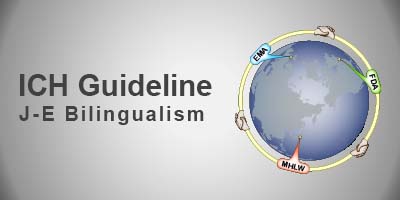薬審第315号
平成9年4月14日
ICH Harmonised Tripartite Guideline
Having reached Step 4 of the ICH Process at the ICH Steering Committee meeting on 29 November 1995, this guideline is recommended for adoption to the three regulatory parties to ICH
医薬品におけるがん原性試験の必要性に関するガイダンス
1. はじめに
がん原性試験の目的は動物において催腫瘍性の可能性を明らかにし、ヒトに対するリスクを評価することである。研究室レベルの研究、動物を用いた毒性試験、あるいはヒトでのデータなどから懸念される理由がある場合には、がん原性試験が必要となろう。げっ歯類におけるがん原性試験の実施の必要性は、患者の寿命の相当な期間にわたって規則的に投薬されることが予想される医薬品について制定されてきた。これらの試験におけるデザインや、得られた結果の解釈は、最近の遺伝毒性を検出するのに有用な試験法や、最新の全身曝露を評価できる技術進歩よりも前から行われていた。また、これらの試験は、非遺伝毒性物質による腫瘍発生について現在の理解がなされる以前から実施されていた。遺伝毒性試験やトキシコキネティクス、メカニズム試験などの成果は、現在では前臨床での安全性評価において日常的に適用されている。これら追補的データはがん原性試験を実施するか否かを考慮するだけでなく、試験成績をヒトでの安全性に関連づけて解釈するためにも重要である。がん原性試験は時間がかかり資源を消耗することから、ヒトでの曝露におけるがん原性の有無を評価するために、動物での生涯試験からの情報が必要となったときにのみ実施されるべきである。
GUIDELINE ON THE NEED FOR CARCINOGENICITY STUDIES OF PHARMACEUTICALS
1. INTRODUCTION
The objectives of carcinogenicity studies are to identify a tumorigenic potential in animals and to assess the relevant risk in humans. Any cause for concern derived from laboratory investigations, animal toxicology studies, and data in humans may lead to a need for carcinogenicity studies. The practice of requiring carcinogenicity studies in rodents was instituted for pharmaceuticals that were expected to be administered regularly over a substantial part of a patient’s lifetime. The design and interpretation of the results from these studies preceded much of the available current technology to test for genotoxic potential and the more recent advances in technologies to assess systemic exposure. These studies also preceded our current understanding of tumorigenesis with nongenotoxic agents. Results from genotoxicity studies, toxicokinetics, and mechanistic studies can now be routinely applied in preclinical safety assessment. These additional data are important not only in considering whether to perform carcinogenicity studies but for interpreting study outcomes with respect to relevance for human safety. Since carcinogenicity studies are time consuming and resource intensive they should only be performed when human exposure warrants the need for information from life-time studies in animals in order to assess carcinogenic potential.
2. 歴史的背景
日本では、1990年の医薬品毒性試験法ガイドラインによれば、臨床での使用期間が連続して6カ月あるいはそれ以上にわたる場合にはがん原性試験が要求されている。もしがん原性が懸念されるような医薬品では,6カ月未満であってもがん原性試験が必要となる場合もある。米国では、ほとんどの医薬品についてヒトで広範囲に用いられる前に動物でのがん原性が試験されている。米国FDAによれば,通常3カ月あるいはそれ以上にわたって用いられる医薬品はがん原性試験が必要である。EUでは、医療用製品管理規則でがん原性試験が要求される場合を規定している。そのような場合とは、長期にわたって投薬される場合、即ち連続して最低限6カ月、あるいは間欠的であっても頻度が高く総曝露量が類似していることなどである。
2. HISTORICAL BACKGROUND
In Japan, according to the 1990 “Guidelines for Toxicity Studies of Drugs Manual”, carcinogenicity studies were needed if the clinical use was expected to be continuously for 6 months or longer. If there was cause for concern, pharmaceuticals generally used continuously for less than 6 months may have needed carcinogenicity studies. In the United States, most pharmaceuticals were tested in animals for their carcinogenic potential before widespread use in humans. According to the US Food and Drug Administration, pharmaceuticals generally used for 3 months or more required carcinogenicity studies. In Europe, the Rules Governing Medicinal Products in the European Community defined the circumstances when carcinogenicity studies were required. These circumstances included administration over a substantial period of life, i.e., continuously during a minimum period of 6 months or frequently in an intermittent manner so that the total exposure was similar.
3. 本ガイダンスの目的
本ガイダンスの目的は、がん原性試験を必要とする条件を規定し、試験に必要以上に動物が用いられることを避けるための適切なガイダンスを提供し、その適用において世界的な行政的評価に一貫性を持たせることにある。これらの試験は現在容認されている科学的水準を反映する方法で実施されることが望ましい。
がん原性試験の必要性を決定する基本的な考え方の中には、患者における最大投薬期間ならびに他の研究からがん原性が懸念されるような情報が含まれる。考慮すべき他の要因としては、予想される患者の規模、がん原性の事前調査結果、全身曝露の程度、内因性物質との類似(相異)点、適切な試験計画、臨床開発との関連における試験の実施時期、などである。
3. OBJECTIVE OF THE GUIDELINE
The objective of this guideline is to define the conditions under which carcinogenicity studies, should be conducted to avoid the unnecessary use of animals in testing, and to provide consistency in worldwide regulatory assessments of applications. It is expected that these studies will be performed in a manner that reflects currently accepted scientific standards.
The fundamental considerations in assessing the need for carcinogenicity studies are the maximum duration of patient treatment and any perceived cause for concern arising from other investigations.
Other factors may also be considered such as the intended patient population, prior assessment of carcinogenic potential, the extent of systemic exposure, the (dis)similarity to endogenous substances, the appropriate study design, or the timing of study performance relative to clinical development.
Need for Carcinogenicity Studies
4. がん原性試験で考慮すべき要素
4. 1 期間及び曝露
臨床での使用が少なくとも6 カ月以上継続されるような医薬品においてはがん原性試験が実施されるべきである。
ある種の化合物では6 カ月を 越えて連続的に用いられることはないかも知れないが、間欠的な方法で繰り返し用いられることがある。特に非連続的な処置の場合のがん原性の可能性に関しては、それが頻繁に用いられる場合、臨床的な処置期間をどのくらいとみなし、科学的に正当化することは困難なことが多い。慢性あるいは再発性の病態の治療において、間欠的な方法で頻繁に用いられる医薬品についてはがん原性試験が一般に必要となる。そのような病態の例として、アレルギー性鼻炎、うつ病、不安神経症などがある。また、曝露が長期間に及ぶようなある種のデリバリーシステムなどではがん原性試験が必要となる場合がある。余り頻繁に投与されない医薬品や曝露期間が短いような医薬品( 例えば麻酔薬や放射性造影剤など)は、発がんの懸念がなければがん原性試験を必要としない。
4. FACTORS TO CONSIDER FOR CARCINOGENICITY TESTING
4.1 Duration and Exposure
Carcinogenicity studies should be performed for any pharmaceutical whose expected clinical use is continuous for at least 6 months (see Note 1).
Certain classes of compounds may not be used continuously over a minimum of 6 months but may be expected to be used repeatedly in an intermittent manner. It is difficult to determine and to justify scientifically what time represents a clinically relevant treatment periods for frequent use with regard to carcinogenic potential, especially for discontinuous treatment periods. For pharmaceuticals used frequently in an intermittent manner in the treatment of chronic or recurrent conditions, carcinogenicity studies are generally needed. Examples of such conditions include allergic rhinitis, depression, and anxiety. Carcinogenicity studies may also need to be considered for certain delivery systems which may result in prolonged exposures. Pharmaceuticals administered infrequently or for short duration of exposure (e.g., anaesthetics and radiolabelled imaging agents) do not need carcinogenicity studies unless there is cause for concern.
4. 2 発がん性が懸念される場合
がん原性試験の実施は発がん性が懸念されるような医薬品に対して推奨される。これらの事例を規定する基準については非常に注意深く考慮されるべきであり、それがほとんどのカテゴリーの医薬品においてがん原性試験を実施する最も重要な理由となるからである。次のような考慮されるべき幾つかの要因がある: (1)そのグループの製品にヒトにも関連すると思われる発がん性が前もって示されている、(2)発がん性のリスクが示唆されるような構造活性相関がある、(3)反復投与毒性試験において前がん病変がみられる、(4)親化合物あるいは代謝物が長期間組織に停滞し局所的な組織の反応やその他の病態生理学的反応を引き起こしている。
4.2 Cause for Concern
Carcinogenicity studies may be recommended for some pharmaceuticals if there is concern about their carcinogenic potential. Criteria for defining these cases should be very carefully considered because this is the most important reason to conduct carcinogenicity studies for most categories of pharmaceuticals. Several factors which could be considered may include: (1) previous demonstration of carcinogenic potential in the product class that is considered relevant to humans;
(2) structure-activity relationship suggesting carcinogenic risk; (3) evidence of preneoplastic lesions in repeated dose toxicity studies; and (4) long-term tissue retention of parent compound or metabolite(s) resulting in local tissue reactions or other pathophysiological responses.
4. 3 遺伝毒性
明らかな遺伝毒性物質は、他のデータがなければ、動物種を越えた発がん物質であることが推定され、ヒトに対する危険性があるものと見なされる。そのような化合物は長期がん原性試験を実施する必要はない。しかしながら,もしそのような医薬品がヒトに慢性的に投与されるものであれば、初期の腫瘍性変化を見つけるために慢性毒性試験(1年までの)が必要であろう。
化合物の遺伝毒性の評価では、全体としての所見を考慮し、in vitro およびin vivoの両試験の本質的な意味と限界を認識すべきである。in vitro とin vivo の両試験の組み合わせ手法は遺伝毒性を持つ化合物が偽陰性の結果になるリスクを減らすようにデザインされている。どの遺伝毒性試験においても、一つの陽性結果は必ずしもその被験化合物がヒトに対して遺伝毒性の危険性を持つことを意味しない(医薬品のための遺伝毒性試験の特定項目に関するICHガイダンス)。
4.3 Genotoxicity
Unequivocally genotoxic compounds, in the absence of other data, are presumed to be trans-species carcinogens, implying a hazard to humans. Such compounds need not be subjected to long-term carcinogenicity studies. However, if such a drug is intended to be administered chronically to humans a chronic toxicity study (up to one year) may be necessary to detect early tumorigenic effects.
Assessment of the genotoxic potential of a compound should take into account the totality of the findings and acknowledge the intrinsic value and limitations of both in vitro and in vivo tests. The test battery approach of in vitro and in vivo tests is designed to reduce the risk of false negative results for compounds with genotoxic potential. A single positive result in any assay for genotoxicity does not necessarily mean that the test compound poses a genotoxic hazard to humans (ICH Guidance on Specific Aspects of Regulatory Genotoxicity Tests).
4. 4 適用並びに患者規模
がん原性試験が要求される場合、通常、市販承認を申請するまでに終了する必要がある。
しかし大規模な臨床治験を実施するような場合には、患者集団に特に発がんの懸念がなければ、げっ歯類のがん原性試験を終了している必要はない。
ある種の難治性の疾患を治療するために開発される医薬品の場合、がん原性試験を市販承認前に実施する必要はなく、これらの試験は承認後に実施すべきである。このことは生命を脅かすような疾患、あるいは重度の消耗性疾患に用いられる医薬品で、満足すべき代替の治療法がないような場合、早期入手を促進することになる。
対象の患者集団で長期の延命が望めないような場合(2-3年以下)、がん原性試験は要求されない。例えば、進行した全身性疾患の治療を目的とした抗腫瘍剤などでは、通常、がん原性試験を必要としない。がん治療薬で、一般的に著効を示し、延命効果が著しいようなケースでは、その後、続発性のがんの心配がある。そのような医薬品が非がん患者に対し補助療法として、あるいはがん以外の適用に拡大される場合には、がん原性試験が通常必要となる。
4.4 Indication and Patient Population
When carcinogenicity studies are required they usually need to be completed before application for marketing approval. However, completed rodent carcinogenicity studies are not needed in advance of the conduct of large scale clinical trials, unless there is special concern for the patient population.
For pharmaceuticals developed to treat certain serious diseases, carcinogenicity testing need not be conducted before market approval although these studies should be conducted post-approval. This speeds the availability of pharmaceuticals for life-threatening or severely debilitating diseases, especially where no satisfactory alternative therapy exists.
Need for Carcinogenicity Studies
In instances where the life-expectancy in the indicated population is short (i.e., less than 2 – 3 years) no long-term carcinogenicity studies may be required. For example, oncolytic agents intended for treatment of advanced systemic disease do not generally need carcinogenicity studies. In cases where the therapeutic agent for cancer is generally successful and life is significantly prolonged there may be later concerns regarding secondary cancers. When such pharmaceuticals are intended for adjuvant therapy in tumour free patients or for prolonged use in noncancer indications, carcinogenicity studies are usually needed.
4. 5 曝露経路
動物での曝露経路は、可能であれば臨床適用経路と同じであるべきである(医薬品のがん原性試験のための用量選択のICHガイダンス)。もし異なった投与経路において類似の代謝及び全身曝露が示されていれば、一つの経路によるがん原性試験を実施するのみでよく、臨床曝露経路に関連する臓器(例えば、吸入剤に対する肺)が被験物質に適切に曝露されていることが重要である。適切な曝露の証拠は薬物動態学的データから得られることがある(反復投与組織分布試験のICHガイダンス)。
4.5 Route of Exposure
The route of exposure in animals should be the same as the intended clinical route when feasible (ICH Dose Selection for Carcinogenicity Studies of Pharmaceuticals). If similar metabolism and systemic exposure can be demonstrated by differing routes of administration, then carcinogenicity studies should only be conducted by a single route, recognising that it is important that relevant organs for the clinical route (e.g., lung for inhalational agents) be adequately exposed to the test material. Evidence of adequate exposure may be derived from pharmacokinetic data (ICH Guidance on Repeated Dose Tissue Distribution Studies).
4. 6 全身曝露の範囲
局所に適用される医薬品(例えば皮膚および眼からの投与)に、がん原性試験が必要な場合がある。ヒトで局所経路から全身曝露が少ないような医薬品では、内部臓器に対する発がん性を評価するための経口投与による試験は必要ないであろう。光発がん性が想定され実施の必要性がある場合は、皮膚塗布によるがん原性試験(一般にマウス)が要求されることがある。眼からの経路で投与される医薬品では、懸念される要因がない場合や、はっきりした全身曝露がなければがん原性試験は要求されない。
同じ医薬品成分で、異なった塩、酸、あるいは塩基を持つもので、既にがん原性試験が実施されている場合、薬物動態学的、薬力学的、あるいは毒性学的に大きな差がないということを明らかにすべきである。曝露の変化やそれに伴う毒性の変化がみられる場合、更にがん原性試験が必要かどうか決定するために、別の橋渡しとなる試験が必要となる場合もある。エステルや複合誘導体の場合は、更にがん原性試験が必要かどうか評価するために同様なデータが価値あるものとなろう。しかし、このことはケースバイケースで考慮されるべきである。
4.6 Extent of Systemic Exposure
Pharmaceuticals applied topically (e.g., dermal and ocular routes of administration) may need carcinogenicity studies. Pharmaceuticals showing poor systemic exposure from topical routes in humans may not need studies by the oral route to assess the carcinogenic potential to internal organs.
Where there is cause for concern for photocarcinogenic potential carcinogenicity studies by dermal application (generally in mice) may be needed. Pharmaceuticals administered by the ocular route may not require carcinogenicity studies unless there is cause for concern or unless there is significant systemic exposure.
For different salts, acids, or bases of the same therapeutic moiety, where prior carcinogenicity studies are available, evidence should be provided that there are no significant changes in pharmacokinetics, pharmacodynamics, or toxicity. When changes in exposure and consequent toxicity are noted, then additional bridging studies may be used to determine whether additional carcinogenicity studies are needed. For esters and complex derivatives, similar data would be valuable in assessing the need for an additional carcinogenicity study, but this should be considered on a case-by-case basis.
4. 7 内因性ペプタイド及びタンパク製剤あるいはそのアナログ
内因性ペプタイドあるいはタンパク質及びそのアナログは、化学的合成品のほか、動物/ ヒト材料からの抽出/ 精製あるいは組み換えD N A 技術などバイオテクノロジー法で作られるが、特別の配慮が必要となることがある。
内因性物質を補充療法として必ず与えなくてはならないような場合(すなわち生理的レベル) 、特に既に同様の製品( 例えば、動物インシュリン、下垂体由来の成長ホルモン、及びカルシトニンなど)で臨床経験があるような場合には、がん原性試験は一般に必要ではない。
げっ歯類を用いた長期がん原性試験は通常必ずしも必要ではないが、治療期間、臨床適用、あるいは患者規模(中和抗体ができて反復投与試験の結果が引き出せず無効になってしまう)によっては、上記以外のバイオテクノロジー製品では考慮すべきである。がん原性試験は次のような状況の場合には必要となるかもしれない: (1)天然の生理活性物質の生物学的作用と著しく異なる製品、(2)天然の生理活性物質と比較して明らかな構造変化が起こるような修飾を施した製品、(3)存在する局所又は全身濃度をはるかに超えてヒトに投与される製品(すなわち薬理学的レベル)。
4.7 Endogenous Peptides and Protein Substances or Their Analogs
Endogenous peptides or proteins and their analogs, produced by chemical synthesis, by extraction/purification from an animal/human source or by biotechnological methods such as recombinant DNA technology may require special considerations.
Carcinogenicity studies are not generally needed for endogenous substances given essentially as replacement therapy (i.e., physiological levels), particularly where there is previous clinical experience with similar products (for example, animal insulins, pituitary-derived growth hormone, and calcitonin).
Although not usually necessary, long-term carcinogenicity studies in rodent species should be considered for the other biotechnology products noted above, if indicated by the treatment duration, clinical indication, or patient population (providing neutralising antibodies are not elicited to such an extent in repeated dose studies as to invalidate the results). Conduct of carcinogenicity studies may be important in the following circumstances: (1) For products where there are significant differences in biological effects to the natural counterpart(s); (2) for products where modifications lead to significant changes in structure compared to the natural counterpart; and (3) for products resulting in humans in a significant increase over the existing local or systemic concentration (i.e., pharmacological levels).
Need for Carcinogenicity Studies
5. 追加試験の必要性
ヒトでの安全性を評価するために行われる動物のがん原性試験から得られた結果について、関連性があるのかどうかしばしば議論の的となる。作用メカニズムを検討し、ヒトでの発がん性の可能性があるのか、ないのかを確認するための更なる研究が必要となる場合がある。ヒトでの安全性において動物の腫瘍所見との関連性を評価することが重要と考えられるときには、メカニズム試験が有用である。
5. NEED FOR ADDITIONAL TESTING
The relevance of the results obtained from animal carcinogenicity studies for assessment of human safety are often cause for debate. Further research may be needed, investigating the mode of action, which may result in confirming the presence or the lack of carcinogenic potential for humans.
Mechanistic studies are useful to evaluate the relevance of tumour findings in animals for human safety.
補遺
注1:3カ月の治療に用いられるとされるほとんどの医薬品は、また、6カ月にわたっても用いられると思われる。多くの医薬品研究や行政側グループの調査では,3カ月だけ用いられるような医薬品を見いだすことは出来なかった。
Supplementary Note
Note 1: It is expected that most pharmaceuticals indicated for 3 months treatment would also likely be used for 6 months. In an inquiry to a number of pharmaceutical research and regulatory groups no cases were identified in which a pharmaceutical would be used only for 3 months.










